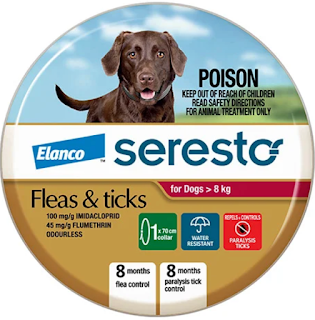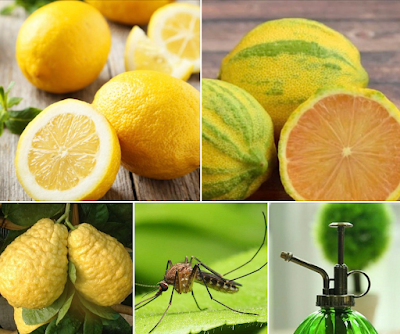Conventional Flea, Tick, Heartworm, Parasite Prevention for Dogs and Cats, What You Should Know Before Choosing to Put Your Dog and Cat On These Harmful Products, Learn About a Natural Approach to Prevention
★ 10 min read
In
this article:
- Conventional Deterrents and Treatments, To Use or Not?
- Active Ingredients in Conventional Preventatives and Treatments
- The American Veterinary Association's Statistics
- What About Products Marketed as 'All Natural'?
- What The EPA is Saying About Conventional Flea, Tick, Heartworm, and Worming Products
- Stronger Labelling and Warnings Needed
- And The Seresto Collar?
- How To Support Your Dog and Cat’s Primary Defence Against Insects and Parasites
- Why Life Span Has Declined Rather Than Increased Since The 1950’s
- Insect and Parasite Acquired Immunity
- Conventional Products - List of Active Toxic Ingredients, Associated Side Effects and Risks
- A Natural Approach
- The Most Effective Approach is a Natural Layered Approach
- Step One
- Step Two
- Step Three
- Step Four
1.0 Conventional Deterrents and Treatments, To Use or Not?
Should you use conventional
synthetic chemical oral or or topical flea, tick heartworm, intestinal parasite products?
Should you adopt a holistic approach?
And
if so, what can you do?
Before
you decide to put your dog or cat on (or continue using) conventional flea, tick
heartworm, mange or other parasite prevention, there are some things you need to know.
This article will answer these questions, help you make informed decisions and provide you with natural alternatives.
2.0 Active Ingredients in Conventional Preventatives and Treatments
Which conventional preventatives and treatment products am I referring to?
Ingested products, including:
- Injections
- Soft chews
- Pills
- Tablets
Topically applied products, including:
- Fleas Collars
- Spot-on drops
- Spray-on products
- Shampoos
- Household and yard powders and sprays
Conventional flea, tick and heartworm deterrents and treatments are synthetic-chemical pesticides. These products are
marketed and sold to you as a solution to keep your dog and cat parasite-free (e.g. heartworm,
fleas, ticks and intestinal parasites). However the active and inactive ingredients in these products cause serious harm to your animal's immediate and long-term health.
Conventional flea deterrents such as Bravecto, Nexgard and similar products:
- DON'T stop fleas from biting your dog and cat.
- DON'T stop flea allergy reactions.
- DON'T provide protection from heartworm.
- DON'T provide protection from lyme disease and other tick borne diseases
Why? Because these products:
- Kill fleas, ticks and mosquitoes only after the insect has bitten your animal.
- Because these products destroy your dog and cat's natural defences against insect-borne diseases. This is discussed further below.
Conventional
preventatives (off-the-shelf and
veterinarian-prescribed), include a warning. The warning is printed on every product package.
The warning advises:
- 'Do not to touch this product with your bare hands'
- 'If your skin comes into direct contact with this product, wash your hands immediately after contact'
Consider the reasons for the warning.
The warning is included on the package because the active ingredients (chemical pesticides) are dangerous to your health.
The brief contact of touching the product with your bare hands can make you ill. Why? Because the potent pesticide enters your blood stream by absorption through your skin.
Alarm bell.
Cause for concern? Yes.
The substance intended to 'protect your dog and cat' is not safe for you to touch. Why?
Because the active ingredients destroy your dog and cat's:
- Blood health
- Gut biome
- Immune system
- Kidney
- Liver
- Neurological system
Adverse side effects can occur immediately or overtime, and/or with repeated exposure to the products.
Side Effects Include:
a partial list
- Blood Issues
- Blood clotting issues
- Internal hemorrhage
- Cancer
- Eye Issues
- Dry eye
- Other issues
- Fatty Lipomas
- Gastrointestinal Issues
- Inappetence
- Diarrhea
- Excessive drooling
- Gut damage
- Nausea
- Vomiting
- Immune system damage
- Kidney issues, damage, failure
- Liver issues, damage, failure
- Neurological Issues
- Behavioral changes and issues
- Incontinence
- Fecal
- Urinary
- Lack of co-ordination
- Nausea
- Seizures
- Pancreatitis
- Skin Issues
- Itching
- Rashes
- Other disorders
- Death
The active ingredients are:
- Toxic
- Carcinogenic
Conventional flea, tick, heartworm products
put your dog and cat's health at grave risk.
At best these substances increase your animal's toxic
load, eventually leading to chronic health issues. At worse the product can cause an acute reaction - seizures and death.
How about the inactive ingredients in these products?
How about the inactive ingredients in these products?
Conventional flea, tick, heartworm and worming products can contain additional toxic ingredients.
For example, toxic:
- Flavoring and colourants
- Foaming agents
- Suspension agents
Examples of conventional flea, tick, heartworm products that harm your dog and cat's health:



 | |
3.0 The American Veterinary Medical Association's Statistics
According to the American Veterinary Medical
Association:
"65% of adverse drug reactions and 48% of all reported deaths
resulting from drug reactions are caused by heartworm preventatives."
4.0 What About Products Marketed as 'All Natural'?
Just because a product is labelled as ‘all natural’ does not
mean that the product is all natural, or safe.
All
natural is NOT a regulated term.
It is important to read ingredients and verify that ingredients are pure, natural, quality sourced, no inappropriate additives and preservatives.
What does a truly natural, pure, safe product look like?
I'll provide examples further below.
5.0 What The EPA is Saying About Conventional Flea, Tick, Heartworm and Worming Products
5.1 "Stronger Labelling and Warnings Needed"
"The U.S. Environmental Protection Agency (the EPA), is pursuing series of actions to increase the safety of spot-on pesticide products for flea and tick control for cats and dogs. Immediately, EPA will begin reviewing labels and determining which ones need stronger and clearer labelling statements. EPA will also develop more stringent testing and evaluation requirements for both existing and new products. EPA expects these steps will help prevent adverse reactions from pet spot-on products.
EPA is coordinating with Health Canada and the Food and Drug Administration's Centre for Veterinary Medicine on these actions. Canada identified similar concern with incidents reported from the use of of spot-on products. The two countries have very similar products registered and some of the registrants, and we often work together on review if data submissions. Some flea and tick products are drugs that are regulated by the FDA. We are collaborating with FDA as well because FDA regulated some similar products and it makes sense for EPA to learn about FDA's processes and learn from its experience in post-market surveillance of incidents associated with animal drugs"
5.2 And The Seresto Collar?
From a recently released EPA report that the Centre for Biological Diversity worked tirelessly to obtain under the freedom of information act:
"The new EPA data reveals that there has been an average of 25 dog and cat injury reports per day since the collars went on the market in March 2012. An average of 21 pet deaths linked to the collars have been reported each month."
Read the Centre for Biological Diversity's report from November 2022, and the EPA's data as released through the freedom of information act here.
6.0 How to Support Your Dog and Cat’s Primary Defence Against Insects and Parasites
Your
dog and cat’s primary defence against insects and parasites is a strong immune
system supported by a species appropriate diet.
Read about a species appropriate diet in this article.
7.0 Why Life Span Has Declined Rather Than Increased Since the
1950’s
Statistics recorded by veterinary organizations
from the 1950's up to present day provided a clear answer.
- The life-span of a companion dog in North America is now half of what it was in the 1950's.
- In the 1950's the average life-span of a golden retriever was 15 to 16 years, today the average is in the range of 8 to12 years.
- In 2005, 50% of older dogs died from cancer, and the number is on the rise.
The increase in cancer has a direct correlation
to:
- Popularization of dry and wet dog and cat food.
- Increase of starchy carbohydrates and by-products used in pet food, along with chemical based additives and preservatives.
- Inappropriate diet.
- Pet grooming products, for example: shampoo, dental care products
- Conventional insect and parasite preventatives and treatments.
- Indoor pollutants including conventional household cleaners.
- Outdoor pollutants including herbicides, pesticides, road-salt, and vehicle exhaust, etc
These substances create a significant toxic load in your dog and cat's body.
Small and larger amounts of toxins. Over time toxins build-up in your animal's body, forcing the liver and kidney to work over-time.
Eventually the body is overwhelmed:
- The liver and kidneys are damaged.
- The immune system cannot function properly.
The
toxins also:
- Damage the endocrine system
- Destroy the natural healthy balance of the blood PH level.
As
a dog’s system becomes burdened your dog and cat dog will develop chronic health issues.
Eventually when your animal's system is no longer able to process and remove toxins, serious health issues develop, e.g. fatty tumours, kidney disease, heart issues, cancer.
8.0 Insect, Parasite Acquired Immunity to Conventional Treatments
Another very
important aspect to consider, synthetic compounds commonly used in the
off-the-shelf flea collars, sprays and drops lose their
efficacy.
Insects and parasites adapt and develop immunity to the conventional pesticides. This results in heightened risk to your animal and harms the environment.
9.0 Conventional Products - List of Active Toxic Ingredients, Side Effects and Risks
The following list provides examples of the common toxic synthetic-chemical pesticides used in conventional parasite prevention products (ingested and topical), examples of side effects and risks.
Amitraz
Used for: Ticks, mange, scabies.
Side effects, partial list: Can cause high blood sugar (hypoglycemia), low blood pressure (hypotension), low body temperature (hypothermia), sedation.
Product example: Proventic
Most at risk: Dogs under 12 weeks of age, do not use on aged, sick, medicated, pregnant or nursing dogs
Arylheterocycles (example - Fipronil)
Used for: Fleas, ticks.
Side Effects, partial list: skin issues, nausea, dizziness, vomiting, weakness, seizures.
Product example: Frontline.
Most at risk: dogs under 8 weeks of age, sick, medicated, or aged dogs .
Dinotefuran
Used for: Fleas.
Side Effects, partial list: Immune system toxicity.
Product example: Vectra.
Most at risk: debilitated, aged, medicated, pregnant or nursing dogs, or dogs known to be sensitive to pesticides, aged, sick, pregnant, or nursing animals.
Fluralaner (an isoxazoline)
Used for: Ticks, mange, scabies.
Side effects, partial list: Can cause high blood sugar (hypoglycemia), low blood pressure (hypotension), low body temperature (hypothermia), sedation.
Product example: Proventic
Most at risk: Dogs under 12 weeks of age, do not use on aged, sick, medicated, pregnant or nursing dogs
Arylheterocycles (example - Fipronil)
Used for: Fleas, ticks.
Side Effects, partial list: skin issues, nausea, dizziness, vomiting, weakness, seizures.
Product example: Frontline.
Most at risk: dogs under 8 weeks of age, sick, medicated, or aged dogs .
Dinotefuran
Used for: Fleas.
Side Effects, partial list: Immune system toxicity.
Product example: Vectra.
Most at risk: debilitated, aged, medicated, pregnant or nursing dogs, or dogs known to be sensitive to pesticides, aged, sick, pregnant, or nursing animals.
Fluralaner (an isoxazoline)
Used for: Fleas, Mange, Ticks.
Side Effects, partial list: decreased appetite, dehydration, diarrhea, vomiting, skin issues, ataxia, muscle tremors, seizures, death.
Product example: Bravecto.
Most at risk: debilitated, aged, medicated, pregnant or nursing dogs, or dogs known to be sensitive to pesticides, aged, sick, pregnant, or nursing animals.
Side Effects, partial list: decreased appetite, dehydration, diarrhea, vomiting, skin issues, ataxia, muscle tremors, seizures, death.
Product example: Bravecto.
Most at risk: debilitated, aged, medicated, pregnant or nursing dogs, or dogs known to be sensitive to pesticides, aged, sick, pregnant, or nursing animals.
IGRs (methoprene, fenoxycarb, pyriproxyfen)
IDIs(lufenuron, diflubenzuron)
Used for: Fleas, lice, ticks.
Side Effects, partial list: diarrhea, salivation, abdominal pain, vomiting, damage to hemoglobin.
Product example: PREVENTIC.
Most at risk: puppies, aged, sick, medicated, pregnant or nursing dogs.
IDIs(lufenuron, diflubenzuron)
Used for: Fleas, lice, ticks.
Side Effects, partial list: diarrhea, salivation, abdominal pain, vomiting, damage to hemoglobin.
Product example: PREVENTIC.
Most at risk: puppies, aged, sick, medicated, pregnant or nursing dogs.
Imidacloprid
Used for: Fleas, heartworm, ticks.
Side Effects, partial list: skin irritation, lethargy, vomiting, diarrhea, gut damage, salivation, muscle weakness, ataxia, miscarriage, skeletal deformities.
Product example: Advantage II, Seresto Collar
Used for: Fleas, heartworm, ticks.
Side Effects, partial list: skin irritation, lethargy, vomiting, diarrhea, gut damage, salivation, muscle weakness, ataxia, miscarriage, skeletal deformities.
Product example: Advantage II, Seresto Collar
Ivermectin
Used for: Heartworm
Side Effects, partial list: neurotoxicity, ataxia, seizures, death.
Product example: Heartgard.
Most at risk: Dogs with defects in P-glycoprotien.
Milbemycin oxime
Used for: Intestinal parasites, heartworm
Side Effects, partial list: tremors, stupor, ataxia, seizures, death.
Product example: Interceptor, Interceptor Plus, Nexgard, Sentinel, Spectra.
Most at risk: Collies or other herding breeds, breeding dogs, pregnant dogs, dogs with seizure conditions.
Nitenpyram
Used for: Blowflies, fleas, maggots
Side Effects, partial list: Anxiety, hyperactivity, vocalization, depression, vomiting, fever, itching, decreased appetite, diarrhea, gut damage, lethargy, ataxia, trembling, seizures, death.
Product example: Capstar
Most at risk: pregnant and nursing animals, puppies, aged, sick animals, animals with seizure conditions.
Fenbendazole, Pancure, Panacur
Used for: Intestinal parasites
Side Effects, partial list: diarrhea, vomiting, hives, scratching, skin lesions, gut damage, swelling, red and white blood cell issues, liver damage, tumors, convulsions.
Product example: Fenbendazole, Panacur C, Panacur, Safe-guard.
Most at risk: all dogs and cats.
Pyrantel Pamoate
Used for: Intestinal parasites
Side Effects, partial list: Facial swelling, hives, scratching, diarrhea, vomiting, gut damage, pale gums, cold limbs, shock, seizures, coma, death.
Product example: Heartgard, Nemex, Pyrantel, Strongid (Strongid P, Strongid T).
Most at risk: all dogs and cats.
Pyrethrins
Used for: Fleas, ticks.
Side Effects, partial list: salivation, vomiting, gut damage, tremors, seizures, death.
Product example: Tick spray on and spot-on flea products.
Most at risk: aged, nursing, pregnant, sick, under seven weeks of age.
Pyrethroids
Used for: Fleas, ticks.
Side Effects, partial list: salivation, vomiting, gut damage, tremors, seizures, death.
Product example: K9 Advantix II.
Most at risk: aged, nursing, pregnant, sick, under seven weeks of age.
Praziquantel
Used for: Intestinal parasites.
Side Effects, partial list: salivation, diarrhea, loss of appetite, gut damage, vomiting, lethargy, ataxia.
Product example: Droncit, Drontal
Most at risk: young, aged and ill animals, animals with liver or kidney issues.
Selemectin
Used for: Fleas, heartworm, intestinal parasites, mange, mites, ticks.
Side Effects, partial list: hair loss, blindness, skin issues, and burns, immune system damage, gut damage, ataxia, seizures, coma, death.
Product example: Revolution
Most at risk: all dogs and cats.
Spinosad
Used for: Fleas.
Side Effects, partial list: loss of appetite, diarrhea, vomiting, gut damage, itching, ataxia, seizures, death.
Product example: Comfortis, Trifexis.
Most at risk: pregnant and lactating animals, animals under 14 weeks of age, animals with seizure conditions, all dogs and cats.
Used for: Intestinal parasites
Side Effects, partial list: Facial swelling, hives, scratching, diarrhea, vomiting, gut damage, pale gums, cold limbs, shock, seizures, coma, death.
Product example: Heartgard, Nemex, Pyrantel, Strongid (Strongid P, Strongid T).
Most at risk: all dogs and cats.
Pyrethrins
Used for: Fleas, ticks.
Side Effects, partial list: salivation, vomiting, gut damage, tremors, seizures, death.
Product example: Tick spray on and spot-on flea products.
Most at risk: aged, nursing, pregnant, sick, under seven weeks of age.
Pyrethroids
Used for: Fleas, ticks.
Side Effects, partial list: salivation, vomiting, gut damage, tremors, seizures, death.
Product example: K9 Advantix II.
Most at risk: aged, nursing, pregnant, sick, under seven weeks of age.
Praziquantel
Used for: Intestinal parasites.
Side Effects, partial list: salivation, diarrhea, loss of appetite, gut damage, vomiting, lethargy, ataxia.
Product example: Droncit, Drontal
Most at risk: young, aged and ill animals, animals with liver or kidney issues.
Selemectin
Used for: Fleas, heartworm, intestinal parasites, mange, mites, ticks.
Side Effects, partial list: hair loss, blindness, skin issues, and burns, immune system damage, gut damage, ataxia, seizures, coma, death.
Product example: Revolution
Most at risk: all dogs and cats.
Spinosad
Used for: Fleas.
Side Effects, partial list: loss of appetite, diarrhea, vomiting, gut damage, itching, ataxia, seizures, death.
Product example: Comfortis, Trifexis.
Most at risk: pregnant and lactating animals, animals under 14 weeks of age, animals with seizure conditions, all dogs and cats.
10.0 A Natural Approach
There
are many natural treatments and remedies that can be used instead of conventional products.
The most effective approach to protection from flea, tick, heartworm, intestinal parasites and associated disease is a natural, layered approach.
.1 The Most Effective Approach is a Natural Layered Approach
- Species appropriate diet designed to suit the individual animal's personal situation.
- Natural topical preventives selected to suit your individual animal.
Healthy animals with a balanced body pH are:
- Significantly less attractive to parasites and insects.
- Better equipped to naturally eliminate parasites and associated disease.
Topical insect repellent should never be
used on its own with the expectation that it can prevent insect bites and
insect-borne disease.
Topical insect repellent aids should be used as part of a layered, natural, holistic prevention plan tailored to suit your individual dog or cat's circumstances.
A natural layered approach to insect and parasite and associated disease prevention, should always include:
- Species appropriate raw or gently cooked and fresh food diet tailored to suit the individual animal's situation.
- Toxin-free personal health protocol.
- Natural topical repellent selected to suit your individual dog or cat's circumstances during insect (e.g. tick season, etc.)
- Daily visual and physical inspection for ticks on your dog or cat.
- This should be done at least 2x per day during tick season.
- Limit unnecessary exposure, e.g.,
- Stay away from areas that are known to be badly infested with ticks.
.2 Step One - Do A Risk Assessment
- This article will take you through the risk assessment for heartworm.
- One you've assessed the risk in your region, then decide:
- If protection is needed.
- What the natural approach for your dog should entail.
.3 Step Two - Transition to a Species Appropriate Diet
- Transition your dog and cat to a species appropriate diet.
.4 Step 3 - Include Supplemental Foods
- Include supplemental foods that make your dog and cat unappealing to insects and parasites.
- Examples, and instructions provided in this article.
.5 Step 4 - Use Natural: Sprays, Spot-on, Dips, Rubs and Wormers
- Go to this article.
- Go to this article.
Natural, herbal wormers:
Article and graphics by Karen Rosenfeld
- Go to this article.
Holistic Diet, Nutrition, Wellness Services Tailored to Your Individual Dog and Cat
For information about my holistic diet, nutrition, wellness services visit my:
Maintain good health | Address acute and chronic health issues | Pre and post surgery support and recovery
My holistic wellness services are available worldwide via video consultation.
🌎 USA | Canada | UK | Europe | Australia | New Zealand | Asia | South and Central America | Africa | UAE
📱 FaceTime | Facebook | Skype | WhatsApp
Holistic Behavioral Services For Your Dog
For information about my holistic behavioral services visit my:
For dogs of all ages, sizes and breeds
My holistic behavioral services are available locally in-person and worldwide via video session.
🌎 USA | Canada | UK | Europe | Australia | New Zealand | Asia | South and Central America | Africa | UAE
📱 FaceTime | Facebook | Skype | WhatsApp
Affiliations to Companies
✓ None.
✓ I don't sell food or supplements.
✓ I'm not aligned with any companies.
✓ None.
✓ I don't sell food or supplements.
✓ I'm not aligned with any companies.
Article and graphics by Karen Rosenfeld
Photo credit: heart photo at the top of the article by Gerd Altmann













